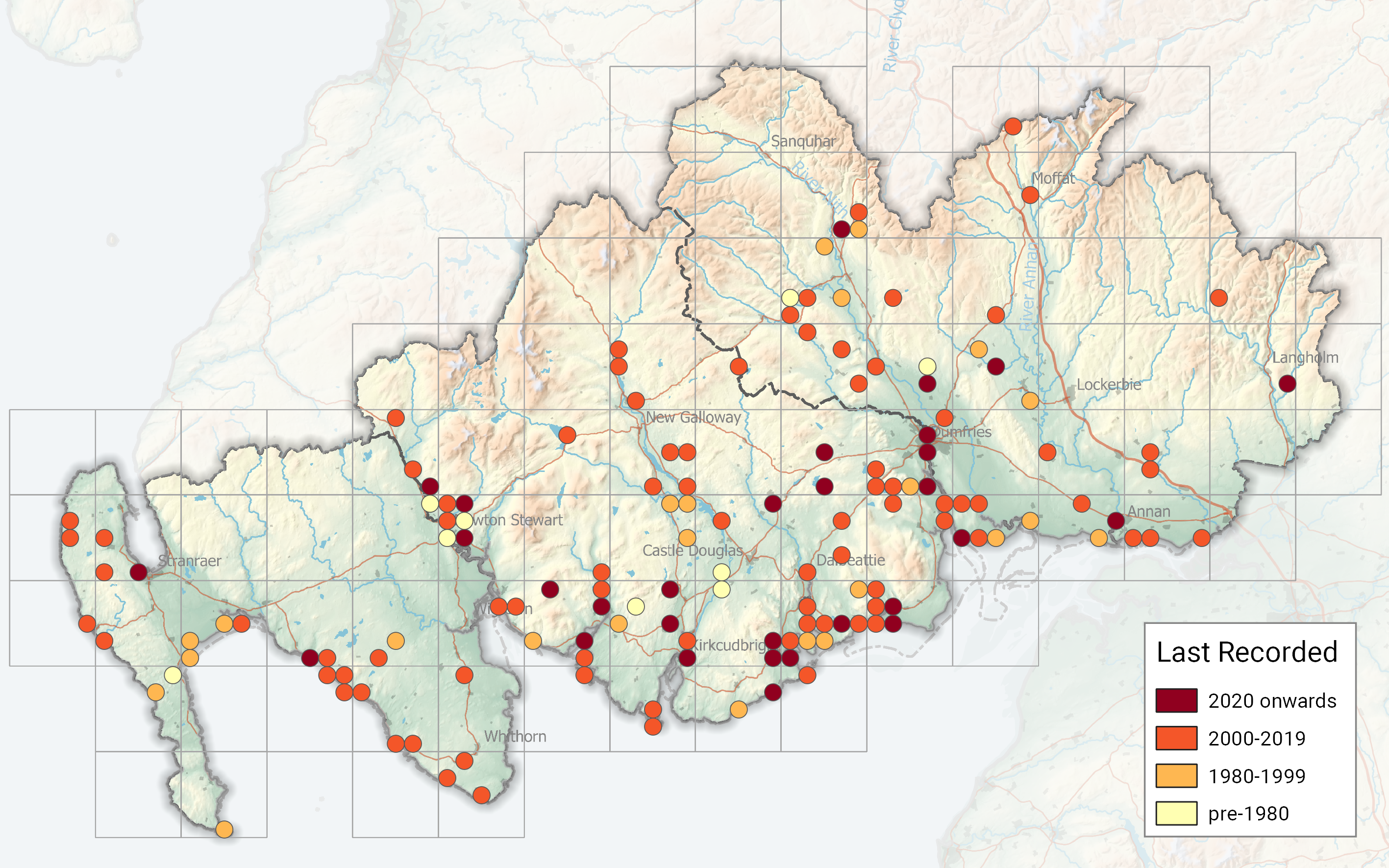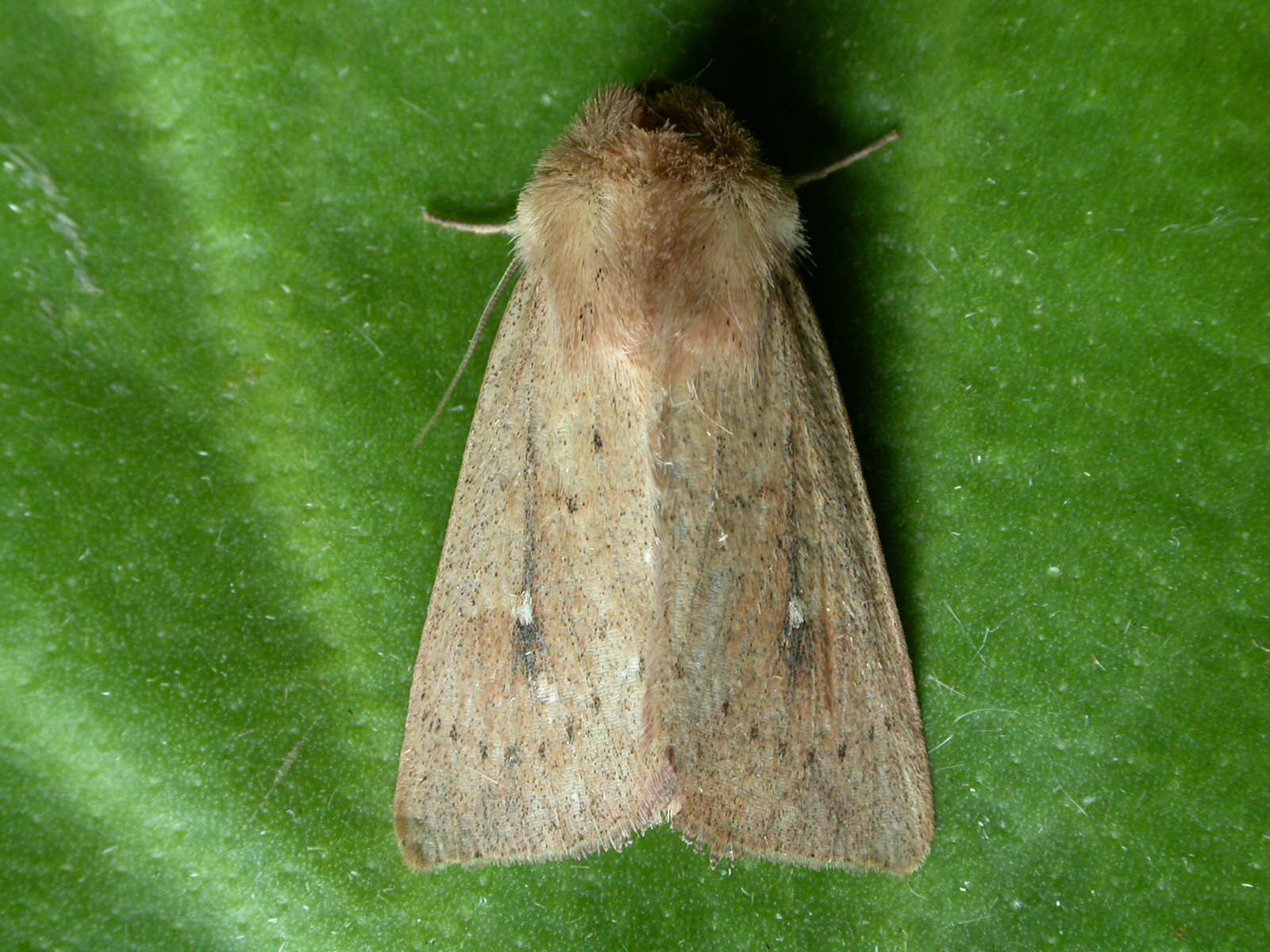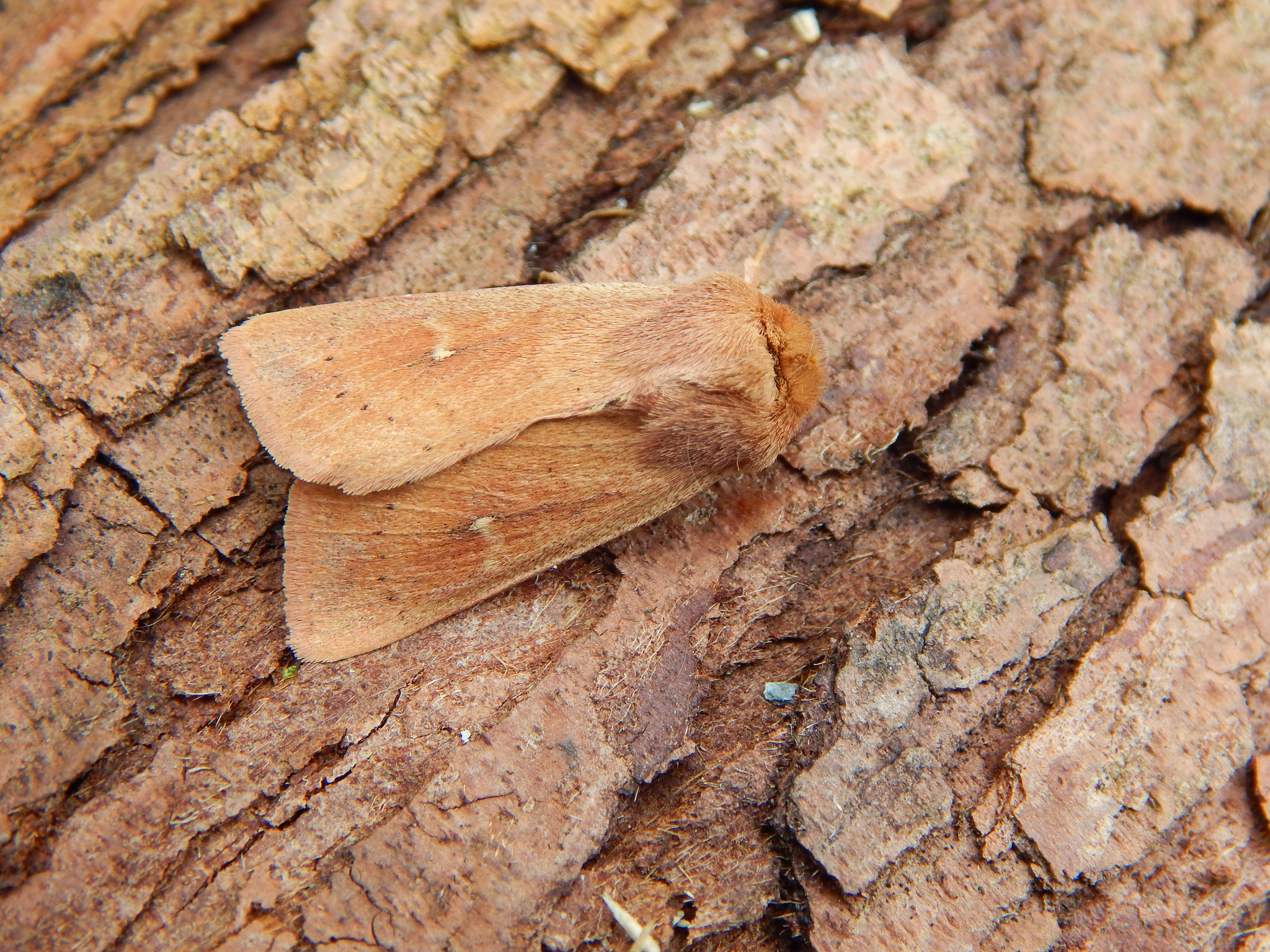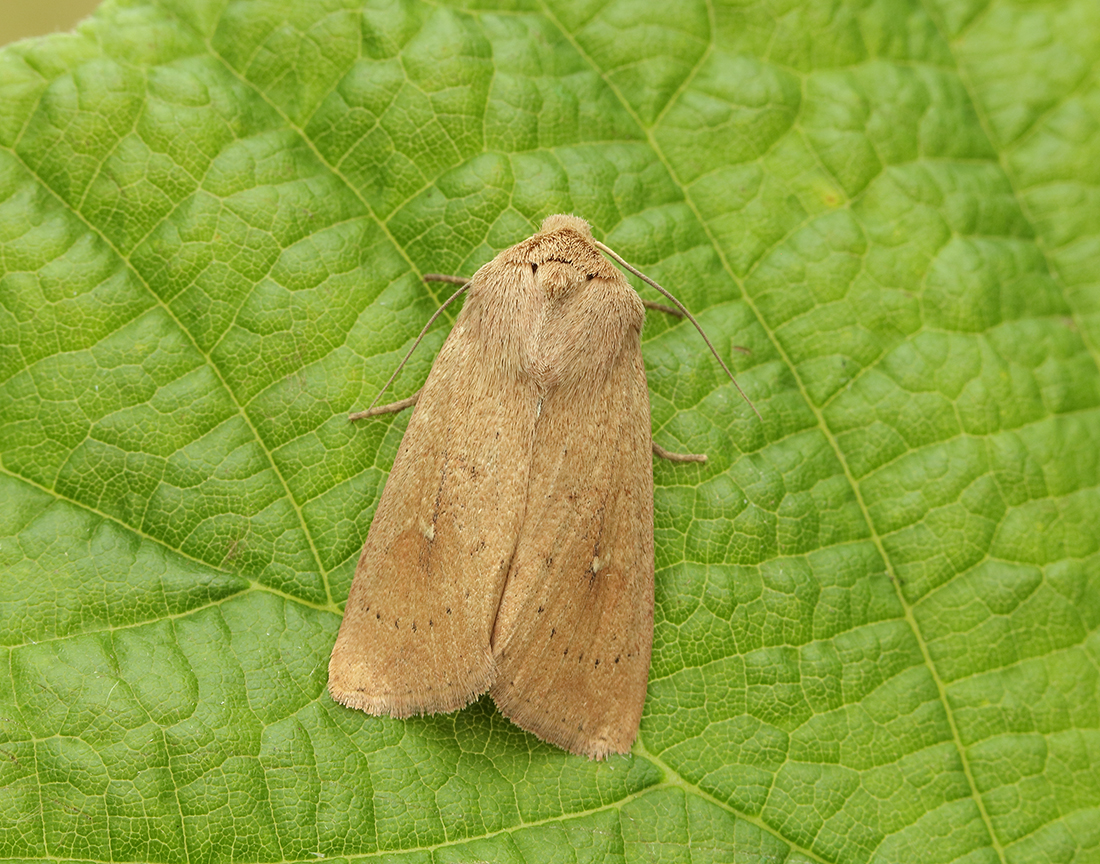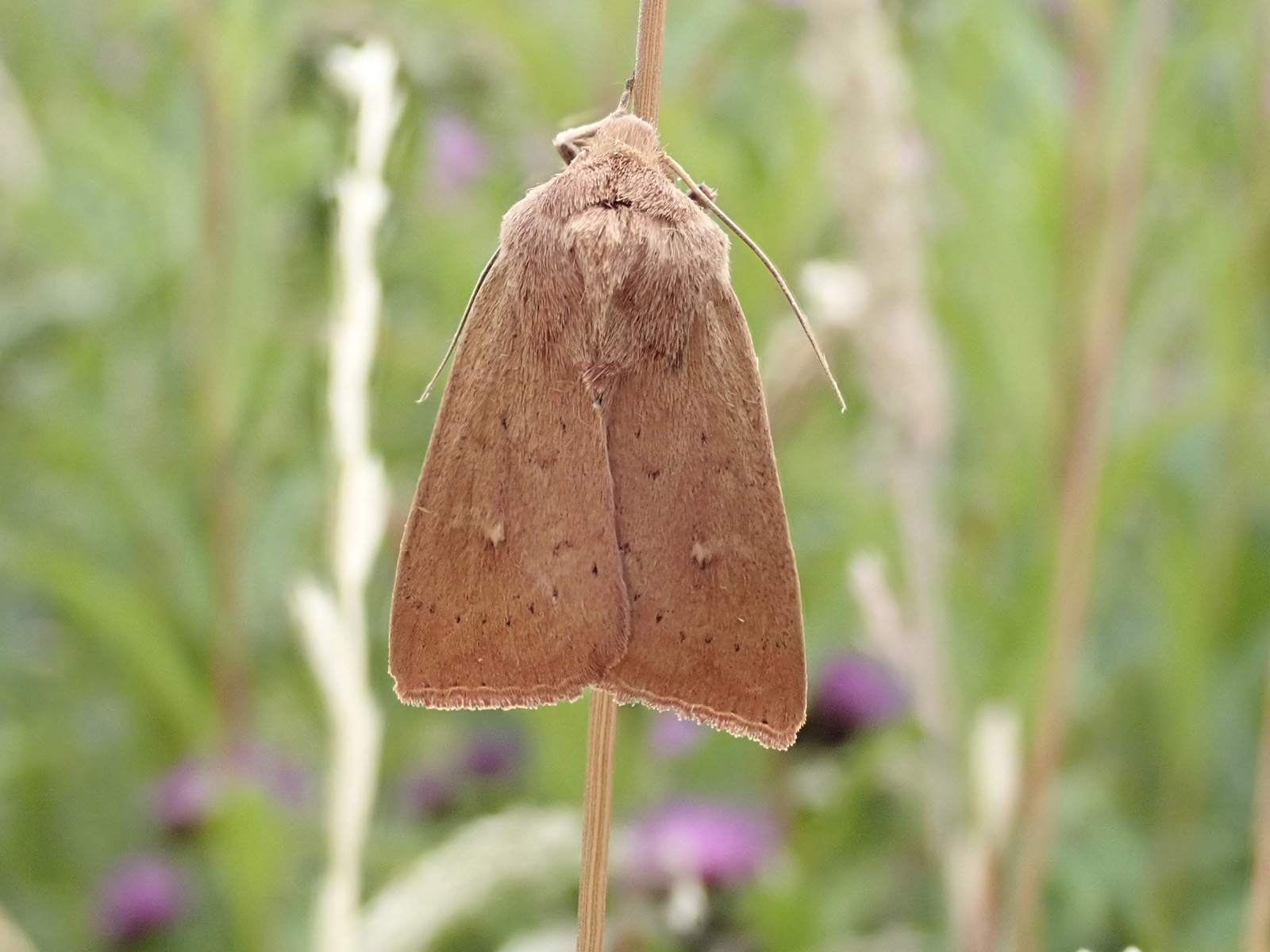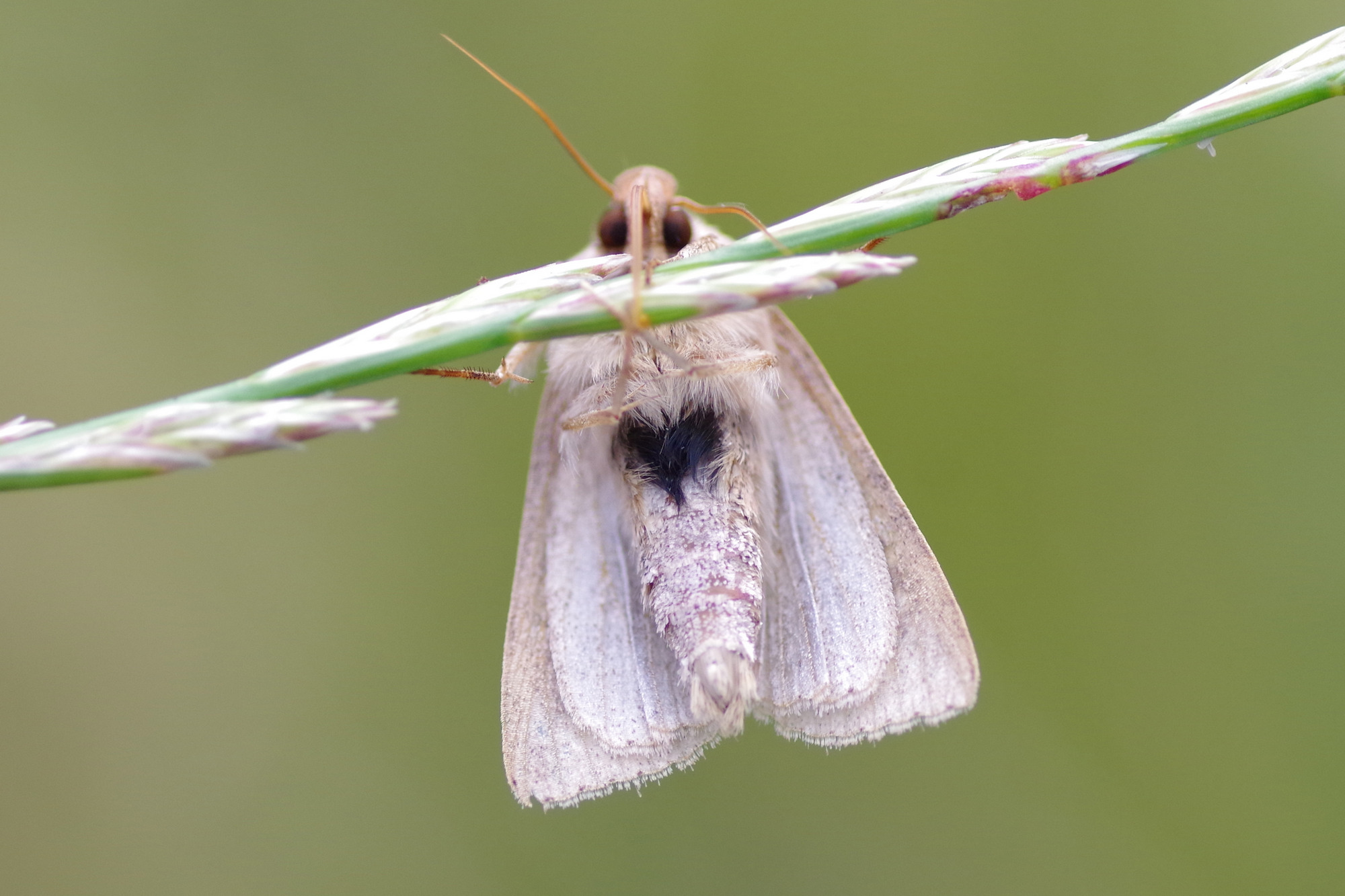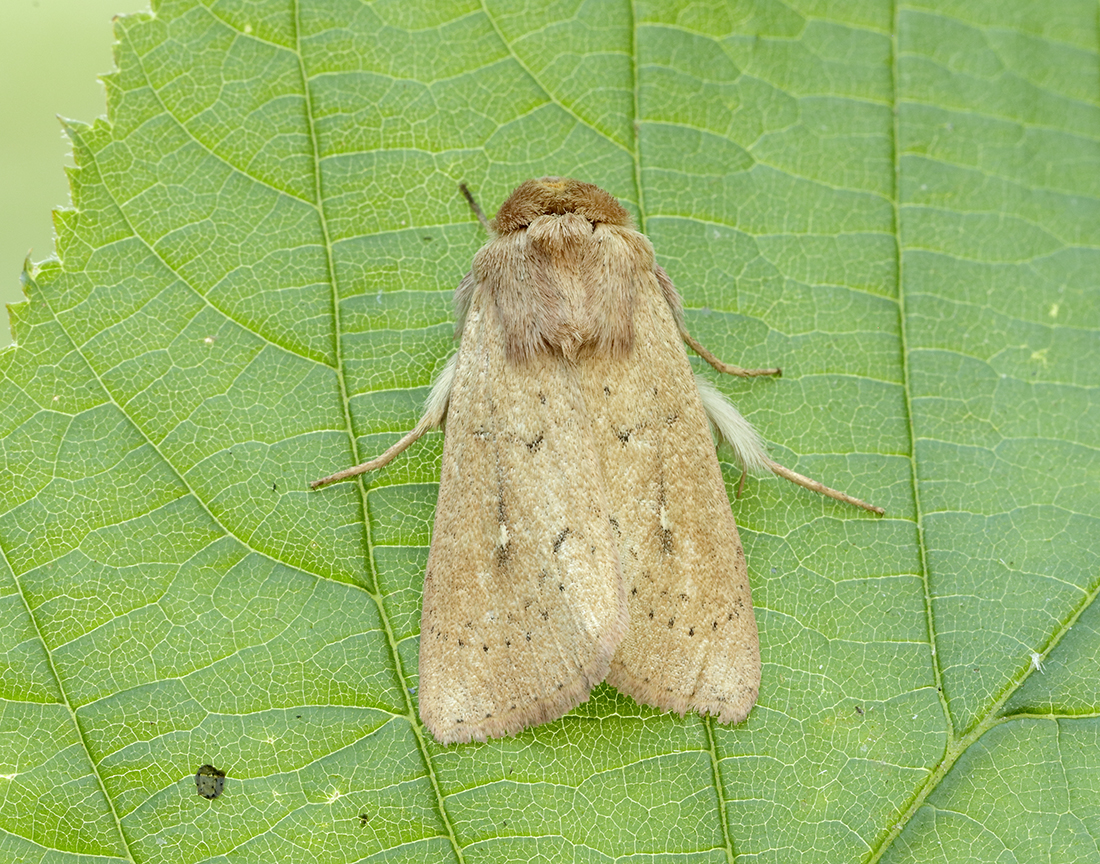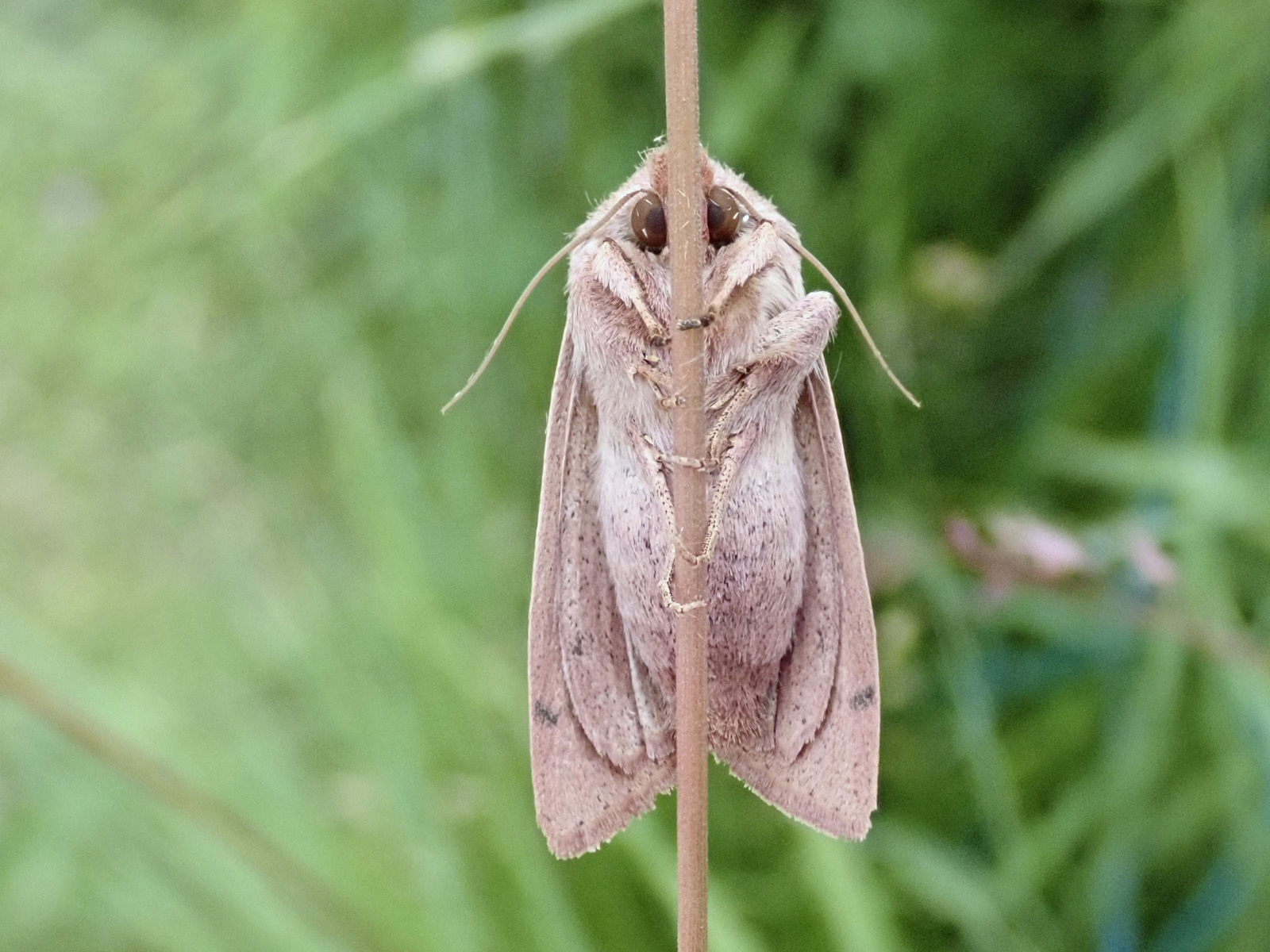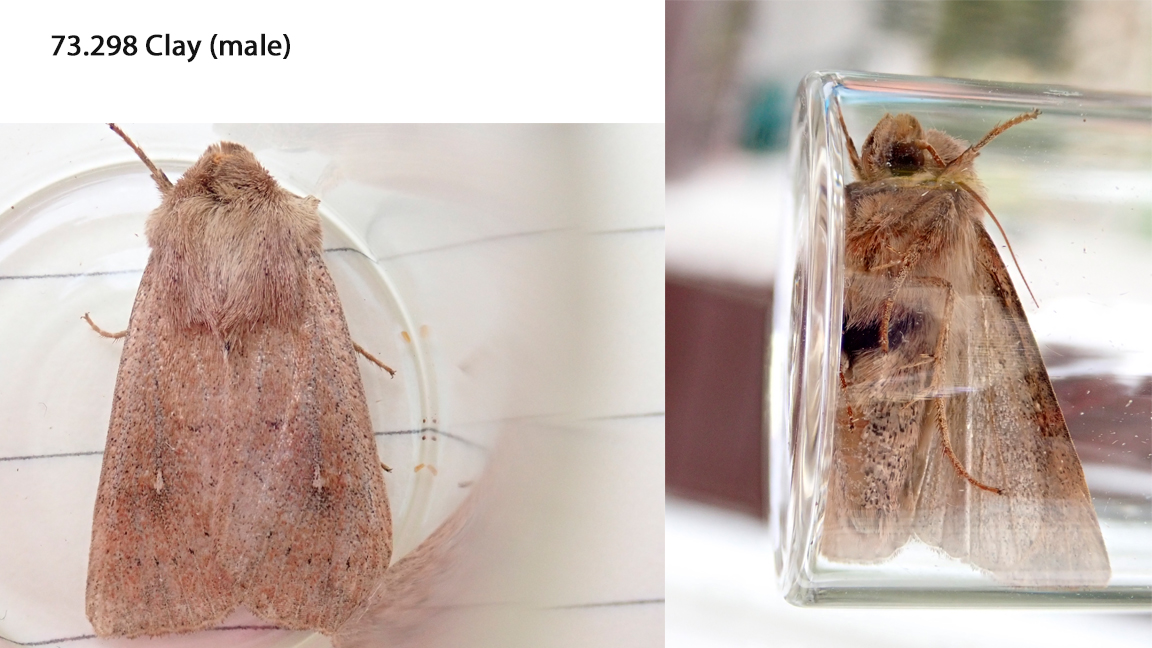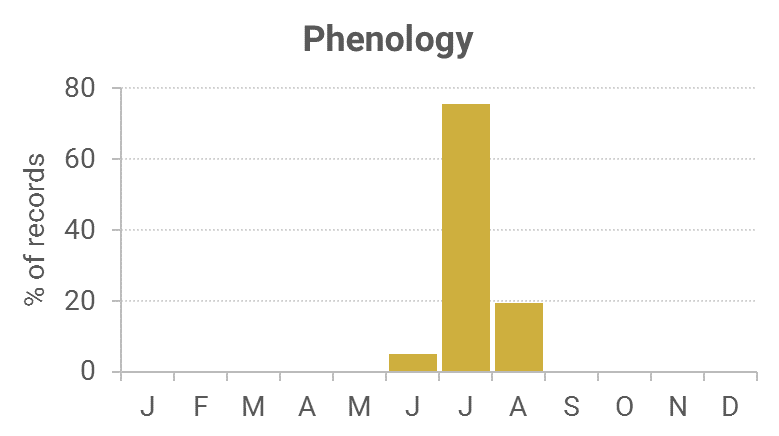Identification
Forewing has a small tear-shaped white mark at the trailing edge of the kidney. The male has a black band on the underside of the abdomen.
Recording Method.
Attracted to light, also comes to sugar and flowers.
Life cycle
One generation. Overwinters as a small larva during August to May, feeding at night. Pupation takes place in an underground cocoon.
Larval foodplants
Larvae feed on Cock’s-foot and other grasses.
Habitat
Grassland, open woodland and gardens.
History
Lennon (1863) stated that it was common around the Dumfries area. K. J. Morton of Edinburgh (1900) whilst on a visit in July 1899 to Wigtownshire had found this species in the Monreith area. Gordon (1913) stated it to be common some years at sugar and flowers in gardens around Corsemalzie, especially in 1896, 1899, with none in ’97 and ’98. Earliest date was 17th June 1899. Sir Arthur Duncan (1909-84) during his lifetime had found it at Closeburn, Tynron and Castlehill, Dumfries (all VC72).
During 1974-92 it was regularly recorded at all of the seven Rothamsted stations. Then from 1992-2001 there were many records from Kirkton (VC72) with lots of records from 1992 to 2010 at widespread sites across the region.

